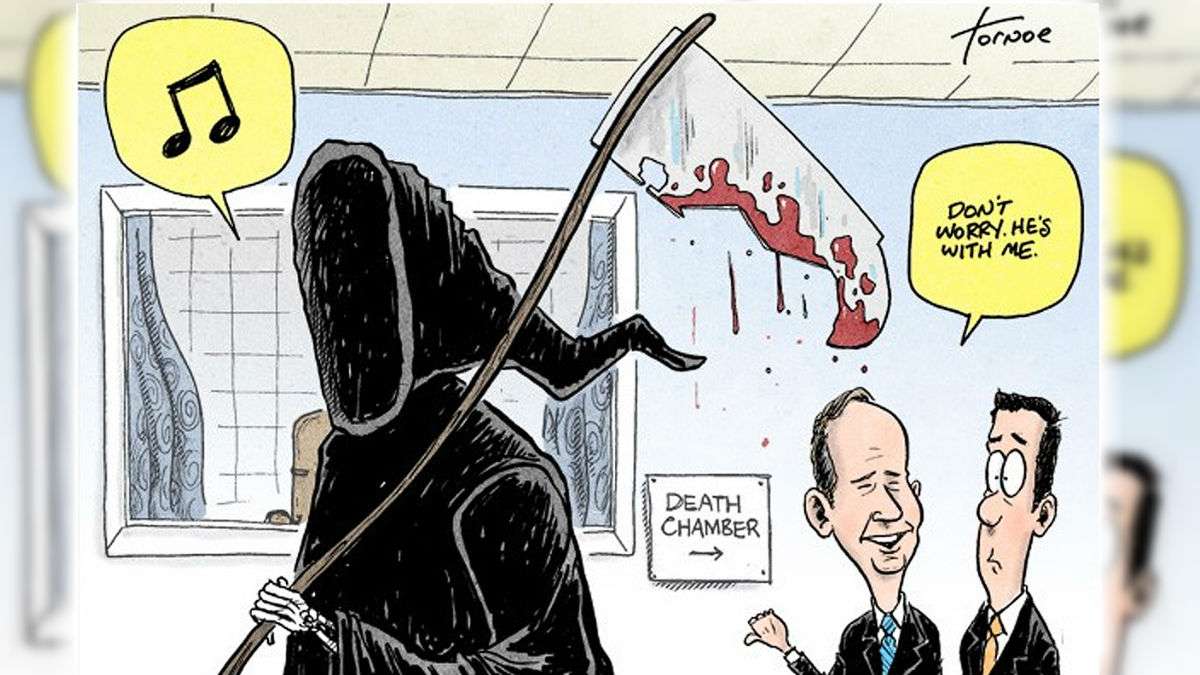Delaware’s bloodlust for the death penalty has returned

Why kill people who kill people to show killing people is wrong?
It’s the question I’ve been asking about the death penalty since way back in 2011, following the execution of convicted murder Robert W. Jackson III, a teenage drug addict when he killed 47-year-old Elizabeth Girardi during a botched robbery.
Jackson is last person the state of Delaware has put to death, but that could be about to change.
Earlier this month, the Delaware House voted 24-16 to restore the death penalty, which was ruled unconstitutional last year in a moment of humane clarity by the state’s Supreme Court, who weren’t keen on leaving the final sentencing decision to a judge.
A bill, laughably dubbed the “Extreme Crimes Protection Act,” would drag Delaware back into the 19th century by requiring a unanimous jury agreement to force a death sentence.
I say laughably because there is still no evidence that executions perform their only stated task – to deter crime. After all, it’s not like Delaware suddenly become an unsafe cesspool of murder in the nine months since the death penalty was banned.
On the flip side, study after study has shown the many, many negative aspects brought into our criminal justice system by executing prisoners – it’s a much more costly form of punishment than life in prison, it is fraught with error and mistakes (especially among the poor) and has been undeniably discriminatory to minorities (especially if the victim is white).
But none of that deters politicians like Rep. Steve Smyk, R-Milton, a chief sponsor of the bill which has been pushed in the wake of the tragic deaths of correctional officer Lt. Steven Floyd and police officer Col. Stephen Ballard.
“I think you have to look at all the criminal justice system, and I don’t think the death penalty, when you look at aggravating circumstances, which constitutes the use of the death penalty, I fail to find anything in there that’s racially motivated,” Smyk said after the vote. He also called the clear data “false” without saying what those falsehoods were. More “fake news,” I guess.
Smyk is a retired Delaware State Police officer, as is Speaker of the House and longtime death penalty supporter Pete Schwartzkopf. I point that out because police officers are typically much more supportive of the death penalty than the general public, and many retired officers fill the elected ranks at Legislative Hall.
“If you commit a violent crime, if you commit an act of violence, there should be a price to pay for that,” said Fred Calhoun, president of the Delaware Fraternal Order of Police and apparently a big fan of the Code of Hammurabi.
I guess Calhoun and the 24 legislators who voted to bring this barbaric act back to Delaware also don’t care that innocent people are killed on death row.
As I’ve pointed out before, Columbia University law professor James Liebman and a team of students published a 6-year study in the Human Rights Law Review that concluded Carlos DeLuna, executed in 1989 for stabbing a gas station clerk to death, was innocent. They note that shoddy police work, the failure to pursue a similar-looking suspect and a weak, government-provided defense led to DeLuna’s downfall.
In fact, since 1973, 159 people awaiting execution have been exonerated and freed. The latest was Ralph Daniel Write Jr., a Florida man who had been wrongly convicted in the murder of his ex-girlfriend and their son.
Just this year, Isaiah McCoy was exonerated by a Kent County Superior Court judge after being convicted of murder and given the death penalty, even though no physical evidence linked him to the murder and two alleged accomplices gave contradictory testimony.
“Two years ago, I was on death row. At 25, I was given a death sentence – and I am today alive and well and kicking and a free man,” McCoy said while hugging his young daughters.
It’s now up to Delaware’s 21 state senators to halt this barbarism in its tracks. To help you make your decision, here are some cartoons about the death penalty I’ve drawn over the years:
WHYY is your source for fact-based, in-depth journalism and information. As a nonprofit organization, we rely on financial support from readers like you. Please give today.









